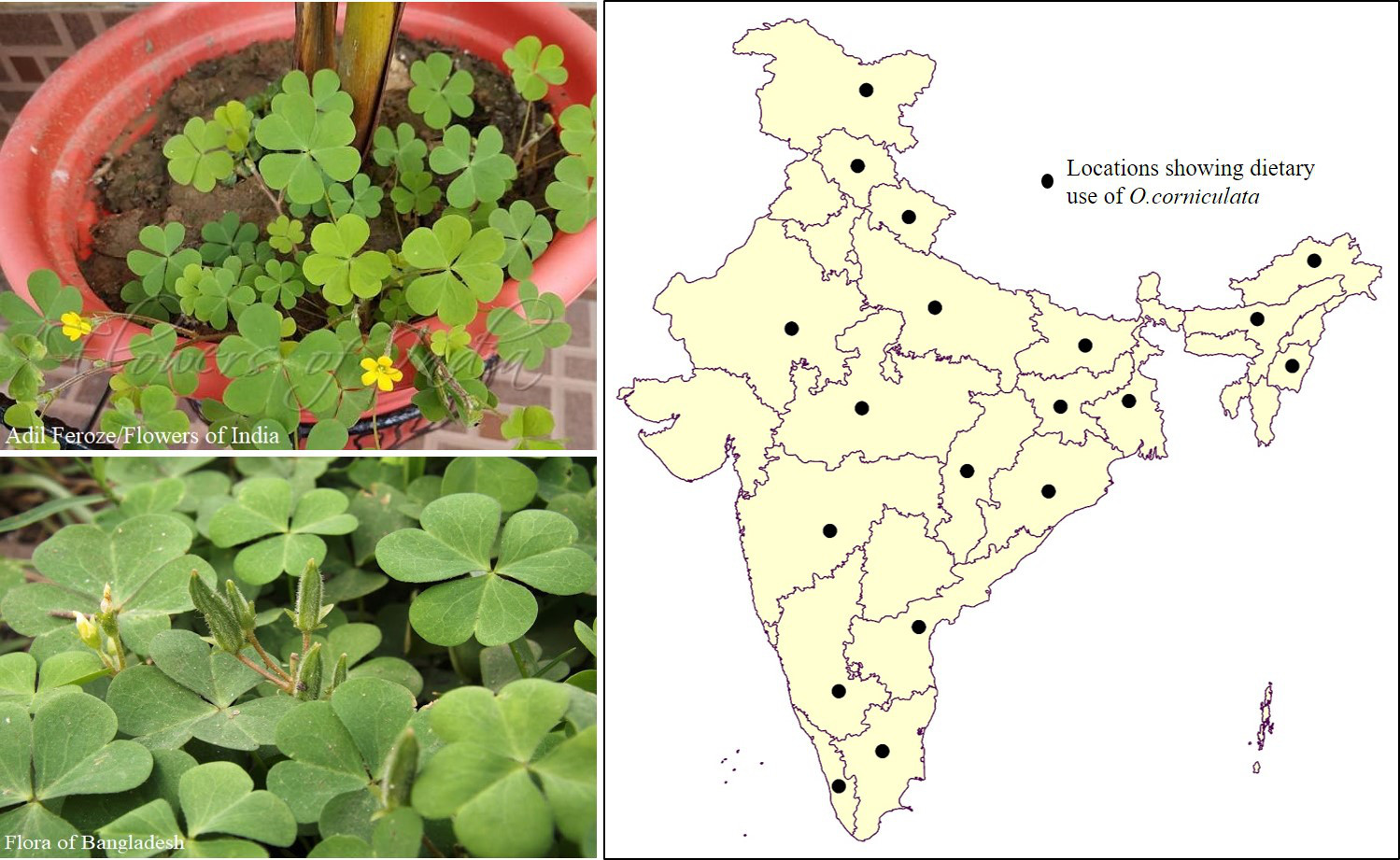Family: Oxalidaceae
Commonly called as creeping wood sorrel, the plant with the clover-shaped leaves stays closer to the ground and is a popular green in the kitchens of India. The leaves are charged with in vitamin C, oxalic acid, protein and lipid, minerals and antioxidants, can be used as a supplementary diet in emergency. The species has many weedy characteristics namely, self-pollination, abundant seed production, and adaptability that render them to grow rapidly in different climatic conditions. However, more than its adaptive traits, the widely appreciated culinary derivatives accelerated the deliberate spread of the species. In the southern parts of India, not only the tribals but even the remote village folks cook the leaves with red gram and eat it with cooked rice. Presumably, the acidic taste has led its acceptance in preparing chutneys (crushed leaves mixed with spicy ingredients) in various cultural geographic regions of India, e.g., in Kerala, the leaves are ground with bird eye chilies (Kanthari) and used as a chutney. Chutney and the fried forms are also quite popular in eastern states of Odisha, Bihar, and West Bengal. Furthermore, the tribes of Rajasthan and Madhya Pradesh (Gonds and Sahariya) also make use of the leaves in chutneys. On the other hand, in Uttar Pradesh, crushed leaves are mixed with curd for eating purposes. The high vitamin C content made it popular among the sailors. Many herbal teas and concoctions are now available online.



